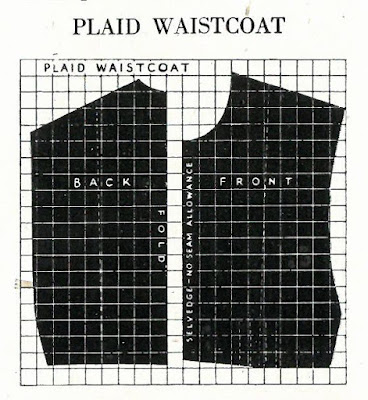In the austere 1940s even Vogue was not above suggesting a bit of creative making do and mending. Here, from the tail end of the war years, is a pattern for making a warm waistcoat from "the unworn parts of a plaid rug, an old tweed suit or coat, or ¾ yd. of 36 in. fabric".
Materials—¾ yd. of 36" material, one buckle. For bigger measurements, enlarge pattern on dotted line. Cut front twice, taking care to cut once for left front, and once for right, and back once, from diagram allowing ½" all round for turnings. Be careful to match pattern. Make darts in front pieces. Join shoulder seams and 2" of side seams up from lower edge. Turn under ½" round neckline and armhole and hem. Mitre one end and attach buckle to the other. Join upper edges of belt to waistcoat, easing back into belt to required size. Press all seams well.
















